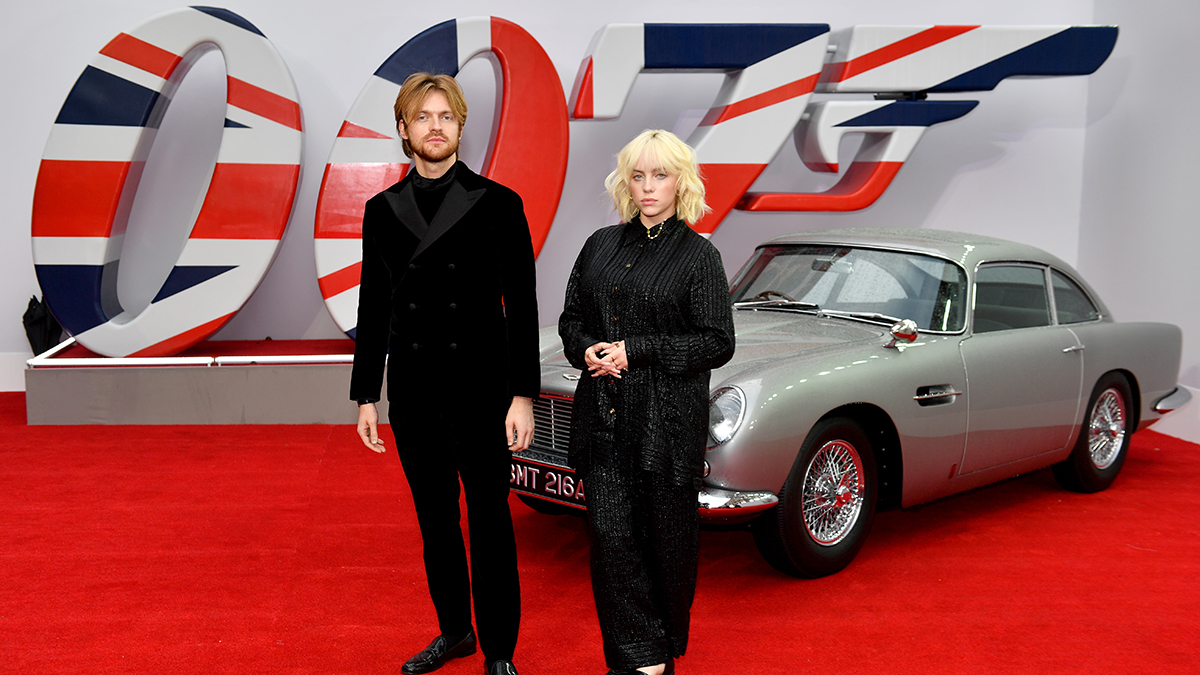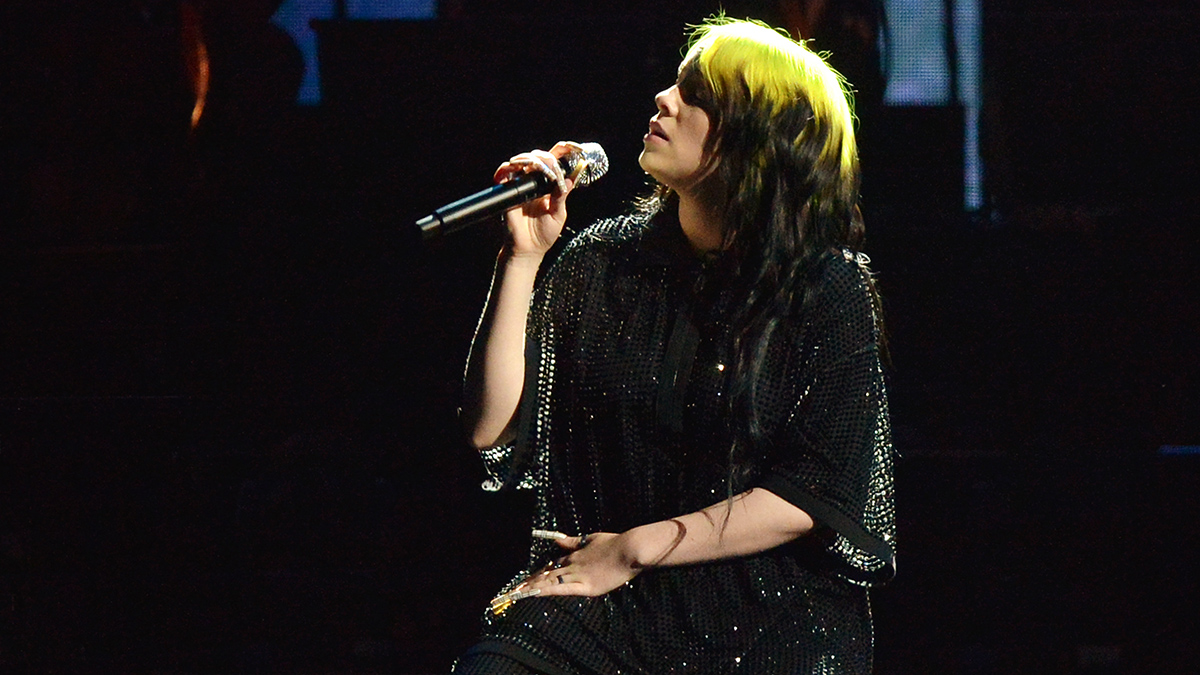The making of Billie Eilish’s No Time To Die Bond theme: “Finneas came up with this chord progression, and we were just immediately like, ‘Oh!’”
“We had an intense amount of writer’s block as soon as we were called to action”

There are movie themes, and then there is James Bond. Ever since Shirley Bassey set the standard with her foghorn vocal on 1964’s Goldfinger, every generation of singers has dreamt of getting the call and stepping into movie immortality.
The producers of cinema’s greatest spy saga have displayed an uncanny Midas touch, with the Daniel Craig era in particular taking the pulse of the modern music scene, from Jack White and Alicia Keys’ bonkers Another Way To Die through to Adele’s Skyfall and on to Sam Smith’s Writing’s On The Wall.

As the era’s greatest pop star, Billie Eilish already seemed like a front-runner for the honour of soundtracking Bond’s 25th outing. Even so, when the 18 year old was unveiled in January 2020 as the singer and co-writer of title theme to No Time To Die - with a little help from soundtrack maestro Hans Zimmer and guitar legend Johnny Marr - it was tantalising to think what she might do with an institution like Bond. As Billie’s older brother and co-writer Finneas O’Connell considered: “In your career, there are few things as desirable as doing a Bond theme. We did not take the opportunity lightly.”
A cinephile since her childhood, Billie told BBC Breakfast she’d long aspired to record a Bond theme: “We kind of told our whole team, ‘Hey, if any Bond things come up, we want to be involved’.”
But frustratingly, when the opportunity did arise, and a studio was booked for writing sessions, the prolific siblings found themselves creatively run dry for the first time in their careers.
When I heard the song, I thought it was really brave. Really minimalist.
Johnny Marr
“We had an intense amount of writer’s block as soon as we were called to action,” remembered Billie darkly. “It was a miserable day in the studio. But that’s because of the studio, to be honest with you. We don’t work well in studios. It doesn’t do the same thing.”
Fittingly for a songwriting partnership who still mostly compose and record in their childhood bedroom, the breakthrough only came when Billie and Finneas left the top-dollar recording facility and returned to their roots. Ultimately, it was a down-and-dirty tour bus ride through Texas that reignited the spark and gave them the raw arrangement of No Time To Die.
Get the MusicRadar Newsletter
Want all the hottest music and gear news, reviews, deals, features and more, direct to your inbox? Sign up here.
“Finneas came up with this chord progression,” recalled Billie, “and we were just immediately like, ‘Oh!’.”
Also, true to form, the pair wrote No Time To Die without outside help, having no need for the writers-for-hire who roam the modern pop industry. But as Billie reflects, they were given an invaluable steer by a very special Bond insider.
“We had a meeting with [producer] Barbara Broccoli in Ireland last September. She came to a show and basically gave us a little hint of what’s happening in the first scene. And then she sent us the first scene of the script, like, before the opening credits. It was so cool to read that. That’s all we had. But it was really helpful. It wrote the song for us.”
“So we were able to read the first 20 pages, which was obviously incredible,” Finneas picked up in an interview for The Independent. “It gave us such a good steer and such insight into where the song would fall and the tone. Billie and I wrote the song, recorded the demo, sent it to them, and then we finished it in London with Hans Zimmer doing the orchestral arrangements and also Johnny Marr from The Smiths.”
“I thought it was already a really smart idea [to choose Billie] before I’d even heard the song,” Marr told NME as he arrived at the BRIT Awards in February 2020 to perform No Time To Die. “I did a couple of shows with Billie last year, so I was well aware of what she did and knew her music. When I heard the song, I thought it was really brave. Really minimalist. Then the trick was to Bond-ify it without doing the obvious. It’s easy to be bombastic, but this was a case of less is more.”
They nailed it. No Time To Die is a brooding four-minute slow burn that nods to Bond themes past with its orchestral sweep and wiry echo-chamber guitar, but also brings the franchise bang up to date with Billie’s whisper-in-your-ear vocals and subtle electronic beats.
“The Bond songs were definitely part of our psyche,” Finneas told the BBC. “We were familiar with You Know My Name and Another Way To Die, and then obviously the classics, like Goldfinger and Live And Let Die. But once we were really sitting down to write it, we did go and re-listen to everything. As much to know what had already been done before, and what to avoid.”
“And not to copy,” stressed Billie.
But there was still one intimidating gatekeeper to sign off on the song: Daniel Craig. “He had to like it,” nodded Finneas. “If Daniel doesn’t like it, you don’t get the job. So he could have vetoed it, absolutely.”
“He’s got a big say in it,” added Billie. “We learned that from this [process]. I didn’t think that would happen, but he’s really involved.”
Released on 13 February 2020, ahead of the original but then delayed released date for the film, No Time To Die debuted at number one in the UK, giving Billie her first chart-topping British single. We’ve had to wait until now to find out how and where the theme sits in the movie, but finally, the wait is over.
“I feel like that song had everything we needed to come back with”: Bring Me The Horizon’s Lee Malia on Shadow Moses, its riff and the secrets behind its tone, and why it was the right anthem at the right time
“I said, ‘Are we sure we can write a song about death?’”: The story of Mike + The Mechanics' classic No.1 The Living Years









